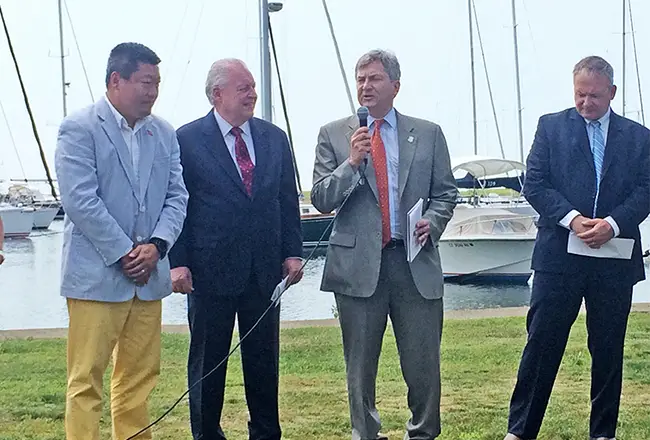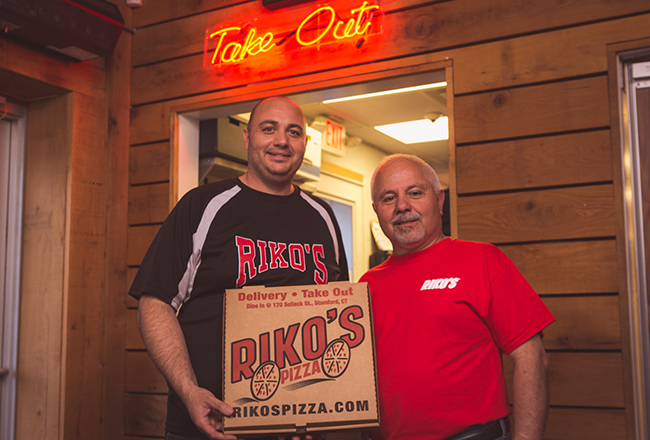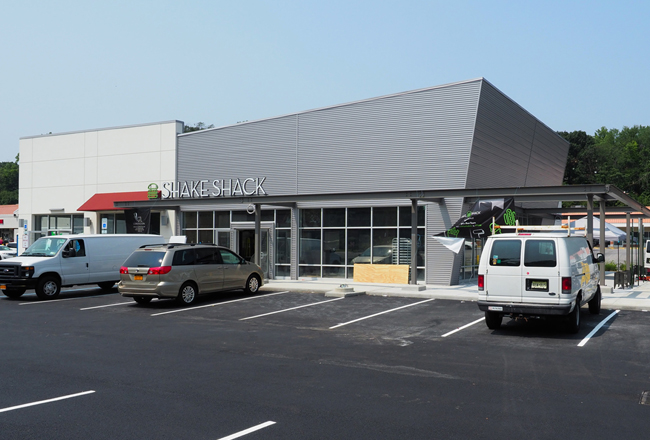
After nearly two years, the Connecticut Port Authority has completed its five-year maritime strategic plan for the state. CPA Board Chairman Scott Bates said that while much of the strategy by necessity involves the state”™s three deepwater ports, concerns that they would take precedence over Fairfield County”™s smaller harbors are misplaced.
“A lot of revenue is generated by State Pier (in New London),” he told the Business Journal, “which is important for Fairfield and the rest of the state. We think that that revenue can be significantly increased, which will also help projects around the state.”
The new plan establishes what the CPA considers eight key goals designed to expand Connecticut”™s economy and create jobs through strategic investment in the three deepwater ports ”” which, in addition to New London, include Bridgeport and New Haven ”” and its small harbors.
“Since the establishment of the port authority, we have taken important steps to better understand the full potential of our state”™s maritime economy and we have made a focused effort to direct resources towards projects and programs that align with the goal of improving the Connecticut job market,” Bates said. “The five-year strategy we are delivering builds on that foundation and prioritizes our goals for our partners, stakeholders and policymakers.”
The eight objectives are:
Ӣ Managing the Connecticut State Pier in New London to increase utilization and profitability by redeveloping it to create long-term stable jobs and maximize the potential links between the port, freight rail and highway transportation systems throughout the region.
Ӣ Continuing to build upon the historical strengths of the stateӪs ports while meeting the changing needs of business, and building a diverse and sustainable set of services.
Ӣ Supporting dredging of the stateӪs ports and waterways by working with partners and the U.S. Army Corps of Engineers to invest in dredging projects that will sustain and increase the use of ports, waterways and marinas.
Ӣ Increasing support for the CPAӪs Support Small Harbor Improvement Projects Program (SHIPP) through funding requests and operational support for future rounds of SHIPP grants.
Ӣ Exploring and developing innovative solutions to enhance intermodal shipping options that can create efficient and cost-effective opportunities for distributing containerized cargo along ConnecticutӪs coastline.
Ӣ Leveraging emerging opportunities by continuing to monitor the landscape for port usage and responding to potential opportunities.
Ӣ Enhancing ferry systems and cruise coordination activities by evaluating ways in which Connecticut can expand its partnership with booking agents and operators of those services, while investing in facilities and infrastructure.
Ӣ Ensuring future support of the CPA by working with the stateӪs elected officials at the federal, state and local level to ensure the port authority is authorized and funded to sufficiently support its objectives for long-term economic growth.
“The marketplace is beginning to notice that the state of Connecticut now has a focused approach to growing the maritime economy,” said CPA Executive Director Evan Matthews. “It is critically important that we build on this momentum, and this five-year strategy sends a clear signal that Connecticut understands the value of its maritime assets and is committed to integrating its ports and small harbors with the state”™s transportation system.”
CPA leadership will use the five-year plan as a touchstone for all decisions related to port development going forward. The executive and legislative branches of government will also use the strategy as a guidepost when developing policy related to the state”™s maritime economy and integrated transportation system.
“Connecticut”™s ports and harbors represent tremendous untapped economic potential,” Gov. Dannel Malloy said. “This maritime strategy will help ensure that we make targeted, smart investments in our marine infrastructure that will help strengthen our coastal communities and create jobs.
“I am proud that the state is already investing in the revitalization of the State Pier to make it a hub for the burgeoning offshore wind industry,” Malloy continued, “and I am confident that this plan will only reinforce our commitment to growing our maritime economy.”
Senate President Pro Tempore Martin Looney of New Haven said the strategy could also result in fewer trucks on the state”™s roadways ”” a welcome development as Connecticut lawmakers continue to debate the hotly contested topic of establishing electronic tolls on several of its major roads.
“Just as Connecticut has made a concerted effort over the past few years to grow jobs in our manufacturing and biotech sectors, now it is time for us to focus on our maritime economy,” Looney said.
Last month, Fairfield First Selectman Mike Tetreau and the CPA announced that two Southport Harbor projects are being funded by grants awarded to the town through SHIPP.
At the request of Fairfield”™s Harbor Management Commission, $266,000 was awarded for dredging of the Ye Yacht Yard marina basin and completion of the reconstruction of the boat launching ramp, with a town match of $11,000 for a total project cost of $277,000.
The CPA also granted $6,500 to help update Fairfield”™s Southport Harbor Management Plan with an equal match from the town for a total project cost of $13,000. Both projects are scheduled for completion by the end of this year with dredging expected to begin this fall. The projects are two of 18 similar SHIPP projects funded by the CPA across the state this year.
“This is an important partnership between the town of Fairfield and the port authority,” Bates said at a July 11 press conference announcing the grants. “Since our establishment as a standalone state agency, we have been making a special effort to fund projects like this based on the merits of each project. Projects like these help advance Connecticut”™s maritime economy, create jobs and enhance our quality of life.”
Bates noted to the Business Journal that the CPA has also been active lately in Norwalk ”” where it played a major funding part in the $1.8 million replacement of Norwalk Visitor Docks at Veterans Memorial Park, which held a ribbon-cutting ceremony in May ”” and that he continues to have “regular contact” with all relevant county municipalities.
Recent CPA board meetings have taken place in Fairfield, Norwalk and Stamford, he said, “which allows our board of directors to hear presentations from local officials about what they”™re doing and what they hope to do.”
“There are 18 locations up and down our shoreline and our rivers,” Bates said. “We”™re in the midst of unlocking the value of our waterfront everywhere, but we”™re not going to big-foot around. We want to work with the municipalities ”” all of them. We don”™t have the luxury of thinking big city versus small town.”
Such work will drive more people to the area because of “improved access to the magnificent resources of our shoreline,” he said. “That has an impact on making those municipalities more competitive by increasing their tax base and improving the overall quality of life.”
With an annual budget of just $1 million, “we”™re mean and lean,” Bates said. “But we have the support of the legislature and the governor. We hope that the new governor, whoever it is, and members of the General Assembly will see the value-add we can provide and see the tremendous opportunity we have for growth.
“We want to be a champion for the entire state,” he said.

















